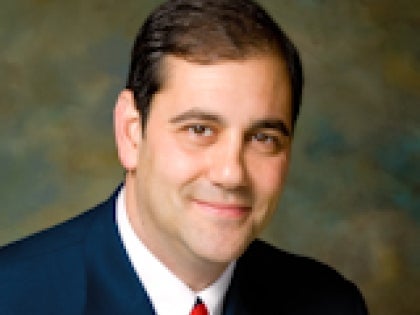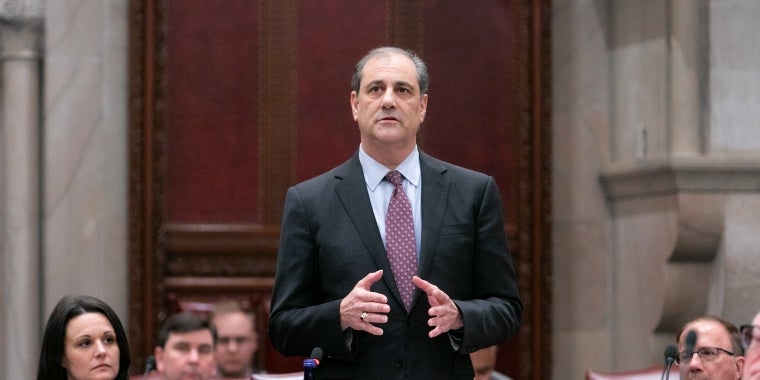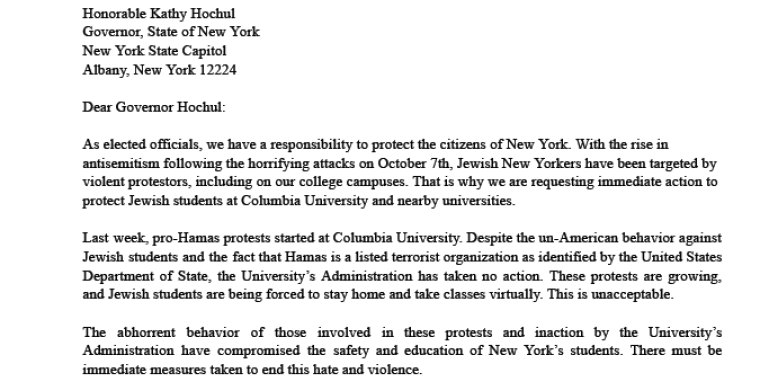
Governor Cuomo Signs Legislation to Combat Heroin, Opioid and Prescription Drug Abuse Epidemic
Andrew J Lanza
June 25, 2014
Governor Andrew M. Cuomo signed legislation designed to combat the growing heroin and opioid epidemic in communities across the State. Last week, the Governor and legislative leaders reached an agreement on multiple bills that include new programs and insurance reforms to improve treatment options for individuals suffering from heroin and opioid addiction; measures to strengthen penalties and put in place additional tools for law enforcement to crack down on the distribution of illegal drugs; provisions to ensure the proper and safe use of naloxone, an overdose antidote; and support for enhanced public awareness campaigns to prevent drug abuse.
"Heroin has become a public health crisis in communities across the nation, but today New York State is taking a stand to turn the tide on this epidemic," Governor Cuomo said. "This legislation builds on actions that we have already initiated by strengthening our laws, improving treatment supports, instituting tougher penalties for traffickers, and training first responders and other emergency or law enforcement personnel in how to use a life-saving anti-overdose medicine. I am proud that we are rolling out this comprehensive and thorough response at a time when New Yorkers need it most, and I thank the many advocates, community leaders and elected officials who have made this day possible."
Earlier this month, Governor Cuomo announced a series of new initiatives including the addition of 100 experienced investigators to the State Police Community Narcotics Enforcement Team; new efforts to make supplies of naloxone available to all first responder units in the State; and the launch of a targeted awareness campaign that will take place on all public college and university campuses. As part of that campaign, SUNY and CUNY personnel will be working alongside State Police to raise awareness about the dangers of heroin and opioid abuse. In 2011, the Governor signed the “Good Samaritan 911 law" to protect individuals who seek medical assistance for a person experiencing a drug overdose or other life-threatening medical emergency from prosecution and arrest for certain drug crimes.
Senate Majority Co-Leader Dean Skelos said, “These new laws will bring our state one step closer to putting an end to the scourge of heroin and helping those struggling with addiction. I commend Senator Boyle, who led the Senate's efforts to highlight this issue in his role as Chairman of the Senate's Joint Task Force on Heroin and Opioid Addiction, and appreciate the input of all the members and hundreds of participants at the 18 forums conducted throughout state. With their help, New York is taking swift and decisive action to ensure treatment for those affected and to give law enforcement the tools they need to get heroin and opioids off our streets.”
“Given the catastrophic effects of the growing heroin and opioid epidemic, we are confident these new laws will address the mushrooming crisis which is being called a state-wide medical emergency,” said Senator Andrew Lanza, member of the Joint Senate Task Force on Heroin and Opioid Addiction. "While there is no magic bullet and there will always be people struggling with addiction, I believe we can turn the tide on this epidemic by changing attitudes and implementing policies, while supporting services for prevention and treatment.”
Heroin is a highly addictive narcotic, with users representing a variety of ages, races and other backgrounds. Fatal overdose, the contraction of Hepatitis C and/or HIV and addiction and dependence are among a plethora of negative side effects that can result from heroin use. In addition to physical danger, heroin use threatens a user’s social ties – often straining family bonds, friendships and professional relationships.
Across the nation, heroin abuse has been increasing at dangerously high rates in recent years. In 2013, there were 89,269 cases of heroin and prescription opiate treatment admissions in New York State alone, an increase from 63,793 in 2004. During this same time period, the drug also disproportionately impacted New Yorkers ranging in age from 18 to 24. Nationally, as many as 467,000 people were reportedly abusing heroin or suffering from heroin dependence in 2012.
The package of bills includes the following provisions:
Improved Measures to Support Addiction Treatment: The legislation includes the following provisions to help support treatment of individuals with substance addiction problems:
- · Enables individuals requiring treatment to have access to an expedited appeals process and ensures that they are not denied care while the appeals process is underway.
· Improves access to care by requiring insurers to use recognized, evidence-based and peer-reviewed clinical review criteria, approved by the State Office of Alcoholism and Substance Abuse Services (OASAS), when making decisions regarding the medical necessity of treatment. This will require insurers to consistently cover the appropriate level of treatment for patients suffering from substance use disorders.
· Ensures medical necessity decisions are made by medical professionals who specialize in behavioral health and substance use.
· Creates a new demonstration program aimed at designing a new model of care that would divert patients who do not need in-hospital detoxification, but still need treatment, to appropriate services and facilities. This program would provide alternative short term community based treatment, avoiding unnecessary emergency room costs as well as enabling OASAS to study the effectiveness of the new approaches to address the needs of individuals suffering with substance addiction.
· Directs OASAS to create a wraparound services demonstration program to provide services to adolescents and adults for up to nine months after the successful completion of a treatment program. These services would be in the form of case management services that address education, legal, financial, social, childcare, and other supports. These services will help former patients improve their quality of life and greatly reduce the likelihood of relapse.
· Provides that young people alleged to be suffering from a substance use disorder – which could make the youth a danger to himself or herself or others – can be assessed by an OASAS certified provider as part of Person In Need of Supervision (PINS) diversion services.
New Penalties to Help Crack Down on Illegal Drug Distribution: The legislation includes the following provisions to enable the State and law enforcement to better crack down on the distribution of heroin, opioids, and illegal prescription drugs:
- · Creates a new crime in the penal code of “fraud and deceit related to controlled substances” to crack down on doctor shopping, criminalizing behavior by those individuals who obtain or attempt to obtain a controlled substance or a prescription by misrepresenting themselves as a doctor or pharmacist, or presenting a forged prescription.
· Adds the “criminal sale of a prescription for a controlled substance or of a controlled substance by a practitioner or pharmacist” as a designated offense for purposes of obtaining eavesdropping warrants as well as adding the offense as a “criminal act” for the purposes of prosecuting enterprise corruption cases. These small but significant reforms will give law enforcement and prosecutors the ability to utilize eavesdropping warrants to further fully investigate crimes involving the distribution of controlled substances, as well as empower law enforcement to further prosecute organized activity related to prescription drug trafficking in New York State.
· Grants the Department of Health (DOH)’s Bureau of Narcotic Enforcement expanded access to criminal histories to aid its investigations of rogue prescribers and dispensers.
· Increases the penalties for the criminal sale of a controlled substance by a pharmacist or practitioner by making the crime a class C felony.
Improved Accessibility to Naloxone Anti-Overdose Kits to Help Save Lives: The legislation includes the following provisions to improve accessibility and ensure the proper use of naloxone – an overdose antidote – when administered:
- · Requires that every naloxone anti-overdose kit include informational cards with the important information on how to recognize symptoms of an overdose; what steps to take, including calling first responders; and how to access services through OASAS.
· Allows for greater accessibility to naloxone. Health care professionals can now prescribe this life saving medicine by non-patient-specific prescription, which means that every police officer or other first responder will have greater access to this life saving medicine. Pharmacists, using their professional expertise, will also be able to dispense naloxone to anyone who needs it.
Expanded Public Education Campaigns to Prevent Opioid and Heroin Use: The legislation includes the following provisions to expand public awareness campaigns to help educate New Yorkers – particularly students and young people – about the dangers of opioid and heroin use:
- · Directs OASAS to undertake a public awareness and educational campaign utilizing public forums, media (social and mass) and advertising to educate youth, parents, healthcare professionals and others about the risks associated with heroin and opioids, how to recognize signs of addiction and the resources available to deal with these issues.
· Directs the State Education Commissioner to update the drug abuse curriculum every three years so that students have the most current and up-to-date information on coping with drug abuse and other substance abuse problems.
###
Share this Article or Press Release
Newsroom
Go to NewsroomItalian American Scholarship 2025
March 10, 2025


